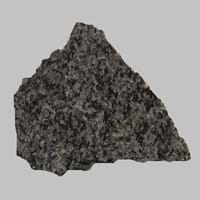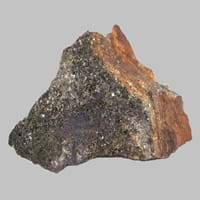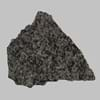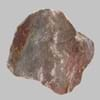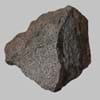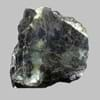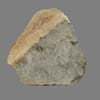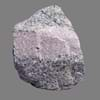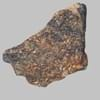Definition
Norite is a mafic intrusive igneous rock composed largely of the calcium-rich plagioclase labradorite, orthopyroxene, and olivine
Hornfels is a metamorphic rock formed by the contact between mudstone or other clay rich rock, and a hot igneous body, and represents a heat altered equivalent of the original rock
Origin
Norway
New Zealand
Discoverer
Unknown
Unknown
Etymology
From the Norwegian name for Norway, Norge
From German which means hornstone
Class
Igneous Rocks
Metamorphic Rocks
Sub-Class
Durable Rock, Hard Rock
Durable Rock, Soft Rock
Group
Plutonic
Not Applicable
Other Categories
Coarse Grained Rock, Opaque Rock
Fine Grained Rock, Opaque Rock
Texture
Phaneritic
Granular, Platy
Color
Dark Grey to Black
Brown, Dark Greenish - Grey, Green, Reddish Brown
Durability
Durable
Durable
Appearance
Veined and Shiny
Dull
Interior Uses
Decorative Aggregates, Entryways, Interior Decoration
Decorative Aggregates, Flooring, Homes, Interior Decoration
Exterior Uses
As Building Stone, As Facing Stone, Paving Stone, Garden Decoration
As Building Stone, As Facing Stone, Garden Decoration, Office Buildings, Paving Stone
Other Architectural Uses
Curbing
Curbing
Construction Industry
As Dimension Stone, Building houses or walls, Cement Manufacture, Construction Aggregate, for Road Aggregate
for Road Aggregate, Roadstone
Medical Industry
Not Yet Used
Not Yet Used
Antiquity Uses
Artifacts, Monuments, Sculpture
Artifacts, Monuments
Commercial Uses
Cemetery Markers, Commemorative Tablets, Laboratory bench tops, Jewelry, Sea Defence, Tombstones
Cemetery Markers, Commemorative Tablets, Creating Artwork
Types
Not Available
Biotite hornfels
Features
Smooth to touch
Smooth to touch
Archaeological Significance
Famous Monuments
Data Not Available
Data Not Available
Sculpture
Used
Not Yet Used
Famous Sculptures
Data Not Available
Not Applicable
Pictographs
Not Used
Used
Petroglyphs
Not Used
Used
Figurines
Used
Not Yet Used
Formation
Norite is a fine-grained, hard rock which is a type of metasomatite, essentially altered basalt. It forms with or without crystallization, either below the surface as intrusive rocks or on the surface as extrusive rocks.
Due to change in environmental conditions, rocks are heated and pressurized deep inside the Earth's surface. Hornfels is formed from the extreme heat caused by magma or by the intense collisions and friction of tectonic plates.
Mineral Content
Augite, Olivine, Plagioclase, Pyroxene
Andalusite
Compound Content
Aluminium Oxide, CaO, Chromium(III) Oxide, Iron(III) Oxide, Potassium Oxide, MgO, Sodium Oxide, Silicon Dioxide, Sulfur Trioxide
Fe, Mg
Types of Metamorphism
Cataclastic Metamorphism, Impact Metamorphism
Not Applicable
Types of Weathering
Biological Weathering
Biological Weathering
Types of Erosion
Chemical Erosion, Coastal Erosion
Chemical Erosion, Glacier Erosion, Sea Erosion, Water Erosion, Wind Erosion
Grain Size
Coarse Grained
Fine Grained
Fracture
Conchoidal
Conchoidal
Porosity
Highly Porous
Highly Porous
Luster
Not Available
Shiny
Cleavage
Not Available
Perfect
Toughness
1.6
Not Yet Found
Specific Gravity
2.86-2.87
3.4-3.9
Transparency
Opaque
Opaque
Density
2.7-3.3 g/cm3
0.25-0.30 g/cm3
Specific Heat Capacity
Not Available
Resistance
Impact Resistant, Pressure Resistant, Wear Resistant
Heat Resistant, Impact Resistant, Pressure Resistant
Deposits in Eastern Continents
Asia
India, Russia
Bangladesh, Bhutan, China, India, North Korea, Qatar, Russia, Saudi Arabia, South Korea, Thailand
Africa
South Africa
Cameroon, East Africa, Tanzania, Western Africa
Europe
Germany, Greece, Italy, Scotland, Turkey
United Kingdom
Others
Greenland
Not Yet Found
Deposits in Western Continents
North America
Canada, USA
Canada, USA
South America
Brazil, Colombia, Venezuela
Bolivia, Brazil, Colombia, Ecuador
Deposits in Oceania Continent
Australia
New Zealand, Queensland
New South Wales, New Zealand, Queensland, Western Australia
All about Norite and Hornfels Properties
Know all about Norite and Hornfels properties here. All properties of rocks are important as they define the type of rock and its application. Norite belongs to Igneous Rocks while Hornfels belongs to Metamorphic Rocks.Texture of Norite is Phaneritic whereas that of Hornfels is Granular, Platy. Norite appears Veined and Shiny and Hornfels appears Dull. The luster of Norite is not available while that of Hornfels is shiny. Norite is available in dark grey to black colors whereas Hornfels is available in brown, dark greenish - grey, green, reddish brown colors. The commercial uses of Norite are cemetery markers, commemorative tablets, laboratory bench tops, jewelry, sea defence, tombstones and that of Hornfels are cemetery markers, commemorative tablets, creating artwork.
